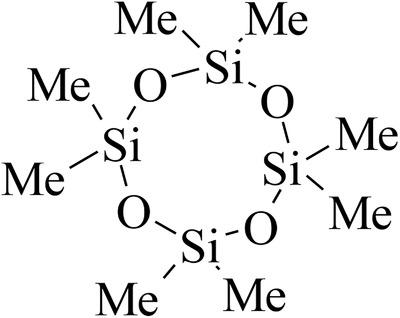当前位置:
X-MOL 学术
›
Macromol. Rapid Commun.
›
论文详情
Our official English website, www.x-mol.net, welcomes your feedback! (Note: you will need to create a separate account there.)
Silicone Surface Fundamentals
Macromolecular Rapid Communications ( IF 4.6 ) Pub Date : 2020-09-16 , DOI: 10.1002/marc.202000360 Michael J Owen 1
Macromolecular Rapid Communications ( IF 4.6 ) Pub Date : 2020-09-16 , DOI: 10.1002/marc.202000360 Michael J Owen 1
Affiliation

|
Many of the applications of the most familiar silicone polymer, polydimethylsiloxane (PDMS), are a consequence of its hydrophobic nature. The key quantities underlying this behavior are the water contact angle with water droplets, the surface tension of the polymer, and its interfacial tension with water. These quantities are reviewed for PDMS and the fluorsilicone polymethyltrifluoropropylsiloxane (PMTFPS) as well as some other less common, more highly fluorinated, fluorosilicones. As aliphatic fluorocarbons are usually introduced into polymers to lower surface tension, it is unexpected that the surface tension of PMTFPS is higher than PDMS. However, this observation is consistent with Zisman's early extensive studies. It is also somewhat surprising that there are no definitive values accepted for the water contact angle with PDMS and the interfacial tension at the PDMS/water interface. Some reasons for this are explored and relevant limitations considered. The variety of ways in which a PDMS surface can be presented must have a major effect on the range of water contact angles reported.
中文翻译:

硅胶表面基础知识
最熟悉的有机硅聚合物聚二甲基硅氧烷(PDMS)的许多应用是其疏水性的结果。导致这种行为的关键因素是与水滴的水接触角,聚合物的表面张力及其与水的界面张力。对PDMS和氟硅氧烷聚甲基三氟丙基硅氧烷(PMTFPS)以及一些其他较不常见的,氟化程度更高的氟硅氧烷进行了审查。由于通常将脂肪族碳氟化合物引入聚合物中以降低表面张力,因此,PMTFPS的表面张力高于PDMS出乎意料。但是,该观察结果与Zisman的早期广泛研究一致。同样令人惊奇的是,对于与PDMS的水接触角和在PDMS /水界面处的界面张力,没有确定的值被接受。探索了一些原因,并考虑了相关限制。呈现PDMS表面的各种方式必须对所报道的水接触角范围产生重大影响。
更新日期:2020-09-16
中文翻译:

硅胶表面基础知识
最熟悉的有机硅聚合物聚二甲基硅氧烷(PDMS)的许多应用是其疏水性的结果。导致这种行为的关键因素是与水滴的水接触角,聚合物的表面张力及其与水的界面张力。对PDMS和氟硅氧烷聚甲基三氟丙基硅氧烷(PMTFPS)以及一些其他较不常见的,氟化程度更高的氟硅氧烷进行了审查。由于通常将脂肪族碳氟化合物引入聚合物中以降低表面张力,因此,PMTFPS的表面张力高于PDMS出乎意料。但是,该观察结果与Zisman的早期广泛研究一致。同样令人惊奇的是,对于与PDMS的水接触角和在PDMS /水界面处的界面张力,没有确定的值被接受。探索了一些原因,并考虑了相关限制。呈现PDMS表面的各种方式必须对所报道的水接触角范围产生重大影响。


























 京公网安备 11010802027423号
京公网安备 11010802027423号